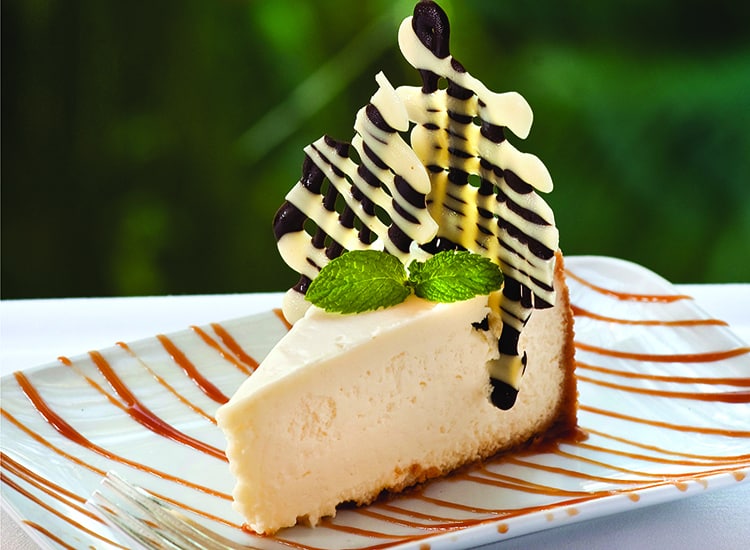
My first meal in New Orleans was at Willa Jean in the summer of 2016. Before I ruined an achingly pretty deconstructed red velvet cake with my fork, I took a bite of the ice cream presented unobtrusively on the side. A palate cleanser before diving into the good stuff, I told myself. It was creamy, buttery, and tart with a lemony finish, unlike anything that has crossed my tongue before. I pulled aside chef Kelly Fields to ask her what the secret ingredient was.“Creole cream cheese,” she replied as if it were commonplace. Wild thoughts of a Zatarain’s-spiced soft cheese instantly came to my Yankee mind—but that couldn’t be further from the truth.
Creole cream cheese is a bit of a misnomer. It’s not a solid spread of the Philadelphia variety. Instead, it’s softer and dollopy, more in the ricotta-mascarpone family; it’s Louisiana’s answer to stracciatella. Typically the cheese is made with a combination of milk and buttermilk (rather than milk or cream only), which is heated with rennet. Once curdled, the mixture ferments for up to two days before curds are drained. The result is a soft, fresh cheese that’s somewhat dry in texture (thus cream or half-and-half is often added before packaging or serving).
Historically, Creole cream cheese was eaten for breakfast with sugar and fruit or as a snack sprinkled with salt and pepper by working-class Creoles. In 1920 the Centanni family founded Gold Seal Creamery and developed the benchmark for Creole cream cheese: rich, nuanced, and thoughtfully executed with quality ingredients. Over the next half-century, small producers thrived—until Big Dairy arrived in America. At the beginning of the 1980s, there were more than 1,000 dairy farms in Louisiana, according to the Southeast United Dairy Industry Association. Now there are just 119.
“As we became more American and less New Orleans, things like yogurt—produced by huge companies—were introduced and heavily advertised,” says Elizabeth Williams, founder of the Southern Food and Beverage Museum. Only a local product, Creole cream cheese could not compete.
By 1999, Creole cream cheese was virtually extinct. Then Poppy Tooker came along. Tooker, executive producer and host of NPR’s Louisiana Eats! a radio show, grew up eating Creole cream cheese—her grandfather used to make it in his own kitchen. After Tooker founded the New Orleans chapter of Slow Food USA in 1999—one of the first 10 chapters in the United States—she nominated the spread for Slow Food’s Ark of Taste, an international catalog of endangered heritage foods. It was voted in unanimously.
Seeing the value of indigenous foods, Tooker began teaching people to make Creole cream cheese at home. Through classes and demonstrations around New Orleans, Tooker made the cheese cool again.
In 1999, third-generation dairy farmer Henry Mauthe attended one of her demos at the Crescent City Farmers Market. Like many other dairy farmers at the time, Mauthe was contemplating selling his farm. After the event, however, he decided against it and spent a year perfecting a nostalgic childhood product: Creole cream cheese.
When Mauthe’s Dairy Creole Cream Cheese debuted, lines wrapped around the block before the market bell tolled. Six-hundred units sold out in two hours. It’s little surprise—the concoction is gorgeously golden and rich thanks to the high butterfat content of Jersey cow’s milk. This modern-day standard of Creole cream cheese “saved our farm and has allowed my daughters to afford a sustainable way of life,” says Kenny Mauthe, Henry’s son, who now owns and manages the farm. Mauthe’s Dairy also secured a deal with Rouses Supermarket to sell Creole cream cheese from Lafayette, La. to Mobile, Ala.
While Mauthe’s Dairy is a well-known commercial producer of Creole cream cheese, the overall revival still has ways to go. Luckily, plenty of Louisiana chefs are working to incorporate the spread into their menus. Find it in Creole cream cheese crab dip at Café b in Metairie; the famous cheesecake at Commander’s Palace in New Orleans; and pints from New Orleans Ice Cream Company. Preserving a local tradition is delicious—we just have to make room on our plates.
Image courtesy: Commander’s Palace (cheesecake) and Café b (crab dip)




